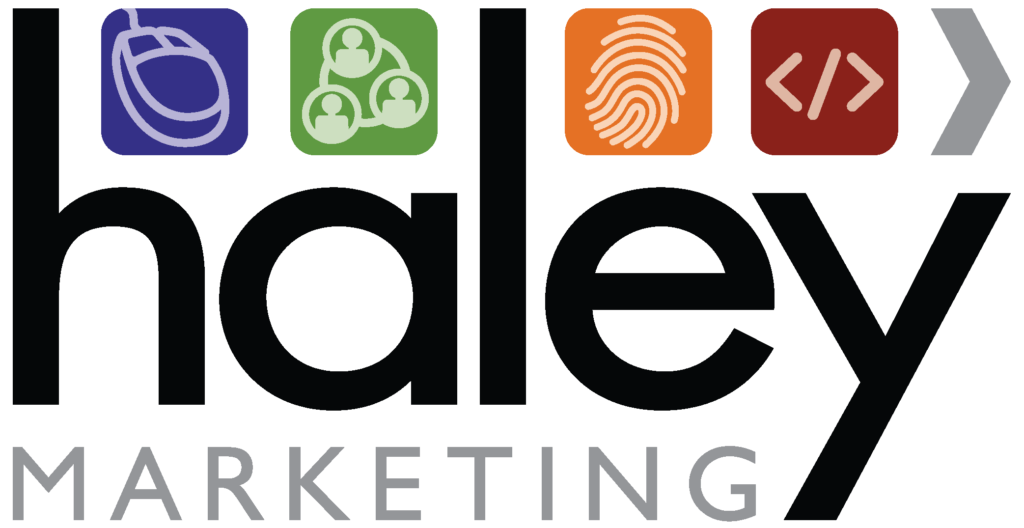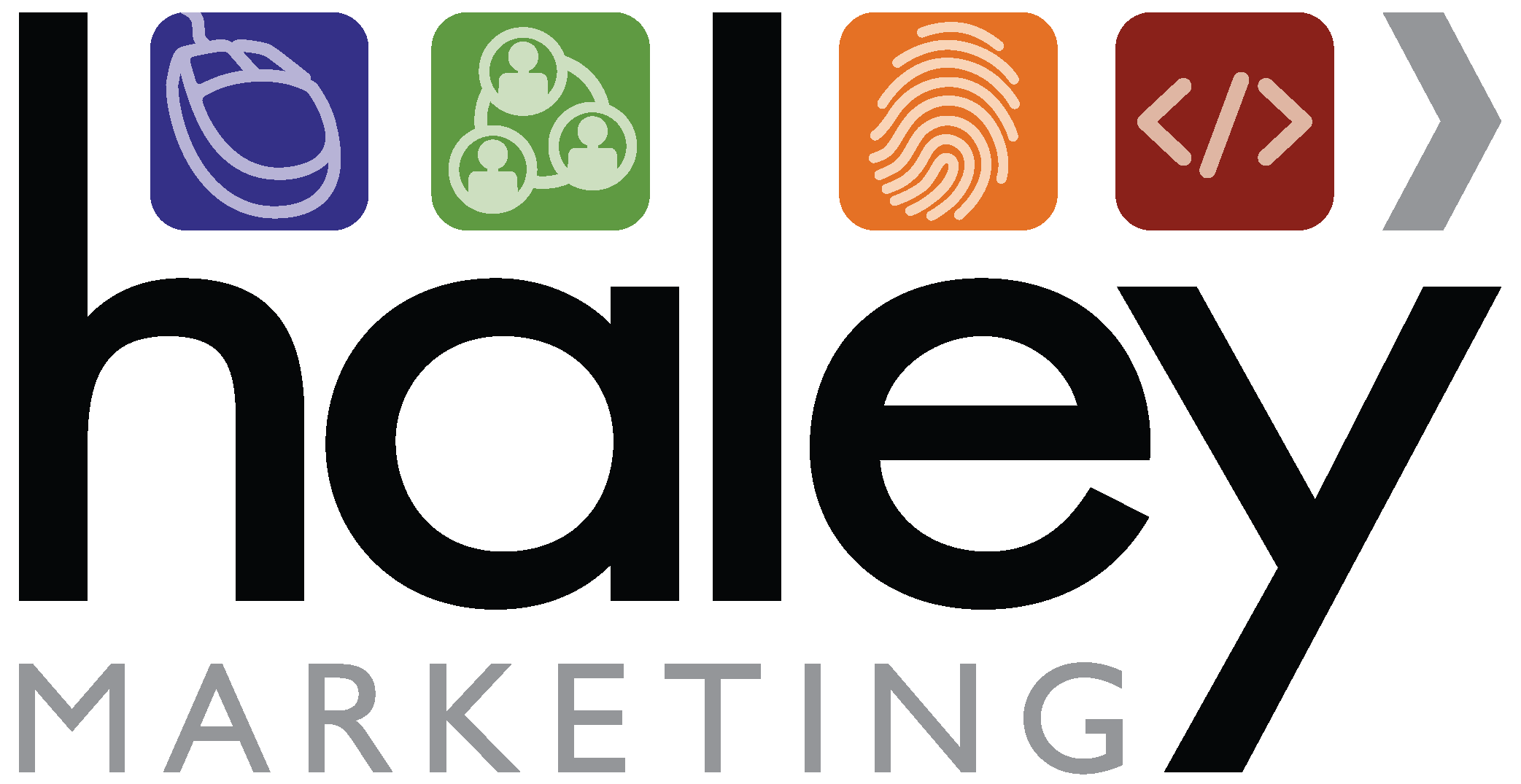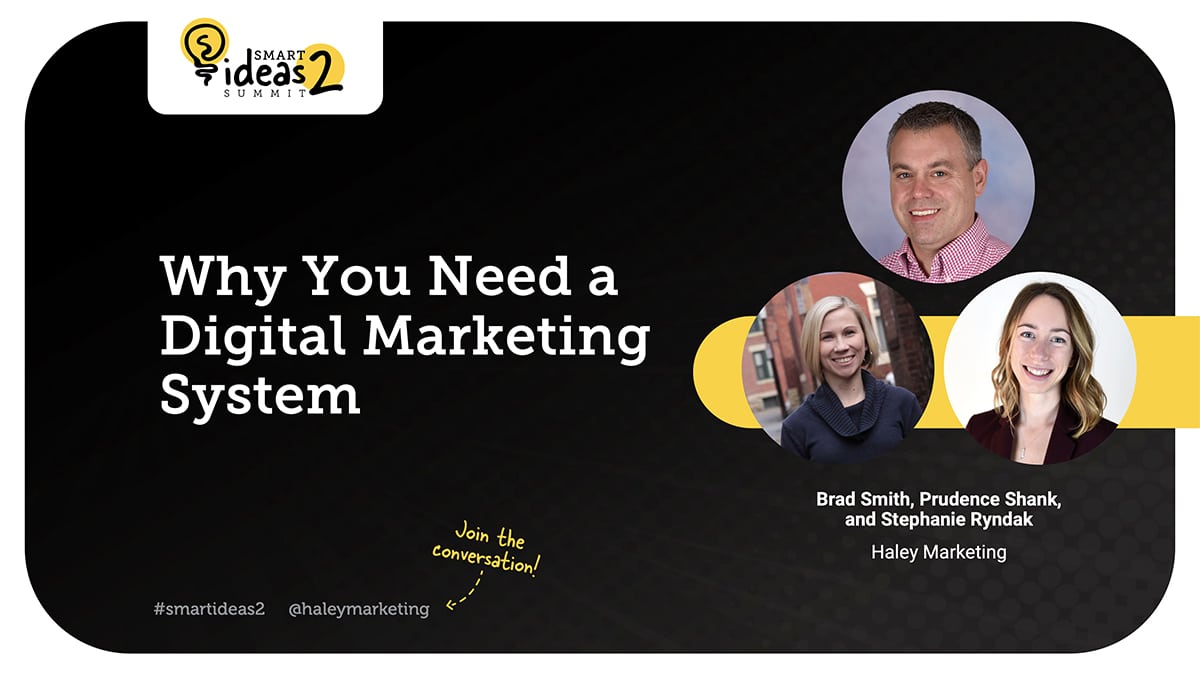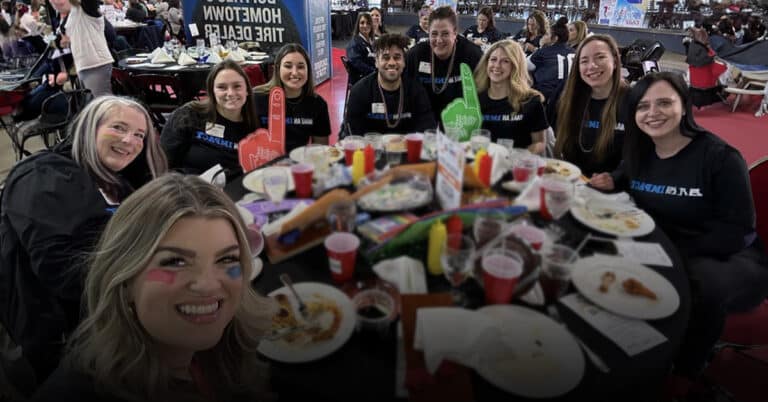Thank you to everyone who attended the SMART IDEAS Summit 2. We appreciate it!
Did you miss a session? Want to rewatch or share any of the presentations? Well, you’re in luck:
The SMART IDEAS Summit 2 Content Is Available on Demand!
Click here to access the free recordings and slides for 14 educational presentations from some of the smartest minds in staffing. You’ll be asked to enter your contact information to access the recordings. Then, start viewing by clicking on the session of your choice.
Session Recap: Why You Need a Digital Marketing System
In this presentation, Haley Marketing’s Brad Smith, Prudence Shank, and Stephanie Ryndak discuss your staffing firm’s digital presence, SEO and PPC strategy, and other aspects of a digital marketing system and why it’s so important:
Video Transcript
Brad Smith:
Happy to be joined by two leaders from our organization, Prudence and Stephanie. We’re going to talk to you about digital marketing systems and why they are a must for your organization. Now we don’t have a lot of time, so we’re going to do this very high-level. But after the fact, if you do have questions, comments, we’ll field those and be here to help as well.
So, why you need a digital marketing system. We heard from a lot of amazing speakers already about how business is changing, things are changing. We saw in the poll that one of the biggest reasons that people leave an organization is lack of responsiveness. Digital marketing can help you be and appear extremely responsive. A great digital marketing system can be your 24/7, 365 day a year, salesperson and recruiter.
Why do you need a digital marketing system?
When your team isn’t out there actively recruiting, actively selling, your digital presence can do that for them and serve up better quality leads for them when they are active in outreach. This next stat really speaks to that. 78% of sales people who use social media perform better than their peers. If you arm your team, if you arm your sales force and your recruiters with effective digital marketing to support everything else that they’re doing to soften the market before they make that connection, they’re going to be way more effective in their jobs and their roles. 77% of purchasers won’t even speak to a salesperson until they’ve done their own research. Where do you think that research is happening about your organization? They’re going online. It’s vitally important that you have a strong digital presence.
And this stat, when I read this, just spoke volumes to me, 40 to 70% of, “Qualified leads,” aren’t even ready to buy yet. So think about your sales cycle. Think about your recruiting cycle. What are you doing from the time that you first speak to a prospect or a candidate, until the time that they close or they choose someone else? Most salespeople are only making two to three connections. It’s going to take 20 to 30 connections to actually make that sale to make that connection. So you need a strong digital marketing system that supports that and communicates throughout that entire process.
Companies that excel at lead nurturing generate 50% more sales and a 33% lower cost for those sales. So digital marketing can help support everything else that you’re doing in your organization. Now, when I say, “Digital marketing system,” I’m thinking holistically.
We, obviously, need a great website. You need social media. You need search engine optimization, pay-per-click, email marketing. You need marketing automation. The key here isn’t which one of these activities you’re going to be great at this year, it’s how are you going to be great at them all? And it’s unrealistic to think that one person in your office, a one-person marketing team can do all of this, so you’re going to need people to contribute. You might need outsourcing. You might need other vendors. You might need subject matter experts, but you need to make sure that your digital marketing system addresses each one of these components and make sure that each one of these components works together.
The Website
I want to talk about your website. I’m not going to dig into detail here. Victoria and Becca, from our team, are going to dig into that later today. But your website, think of it as your core or your hub. We want to make sure that it’s accessible on all devices.
One big mistake that I see staffing and recruiting companies make, is they try to be everything to everyone. You need to clearly convey your value proposition on your website, make it as easy as possible for people to know what you’re a specialist in, and then give people a reason to be there. Your website can’t just be an online brochure, you need content. And I love the concept in the book, They Ask, You Answer. Your website needs to be content-rich and it needs to be value driven.
Think about all the questions that your clients, your prospects, your candidates are asking your sales team, your recruiters on a daily basis. Write content that answers all of those questions and get it up on your website, so that it’s a resource and a tool for you. Every page on your website should have a purpose. It should have a strong call to action or CTA. It should convert people and drive people down a funnel. And of course, make it as easy as possible to do business with you.
Email Marketing
Next in your digital marketing system is email marketing. A lot of people forget this, but the stat that David just shared was amazing. Haley Marketing Group has sent over 36 million emails in all different areas in recruiting, in sales, in lead gen, in connections for our clients. Why? Because it’s effective. Email monitor reported that email marketing is one of the highest ROI activities, a 4,200% return on investment. It works. 72% of customers report email is their main channel for business communication. But in order to be effective, you need to keep that list current and fresh.
I suggest segmenting your list as much as possible so that you can drive relevant information to the right people. You need to test between HTML and nicely designed graphic emails and simple text-based emails, like emails that might come through automation.
Quick tip: a lot of our clients are driving great results and getting new orders from top candidate emails. So when a candidate comes in your door, what are you doing to market them immediately so that they find a job with your agency and not your competitor? Top candidate emails are an amazing lead generator. So email’s not dead, make sure it’s part of your digital marketing system.
Marketing Automation
Building off that, you need to make sure that you have marketing automation. Again, I’m not going to jump too much into this. Jeff and Matt just talked a little bit about marketing automation and we’ll touch on it in other presentations. But that stat, 40 to 70% of qualified leads aren’t ready to buy yet, it’s vitally important. You need to make sure that you stay in front of people during that sales cycle so that they work with you, they buy from you, they apply with you. You can do that through automation.
And lead quantity and quality rises when you use marketing automation, makes marketing more personable. You can personalize everything, really saves time and helps you increase efficiency for your team. Your sales reps can’t be out there dealing with those C and D sales prospects who might buy eventually. They need to be focused on the A’s, but you can’t forget those people. Use marketing automation to stay in front of them. It’s going to improve your marketing, your sales and your recruitment collaboration so that every area of your company is working together. And perhaps most importantly, right now, it’s going to help you decrease call-offs, no-shows, walk-offs, all those candidate issues that you’re facing right now.
Social Media Marketing
Your digital marketing system needs social media marketing. We all know that, but I think oftentimes we forget about the purpose of social and how it can be impactful.
The average US adult is spending two hours a day on social media every day. Consumers trust online reviews, as much as personal recommendations. Where do you think they’re getting those reviews? Where do you think they’re hearing about your business or your competitors? It’s happening online. Your brand positioning can be driven, and oftentimes is proven, by your online presence. So you need to make sure that you have a strong online presence there. Now we have full webinars, an hour and longer, dedicated to social media marketing, but here are some key things that I want you to remember from this. You’re going to need to pay to play. Okay? I said, “May,” on this slide, you’re going to need to pay to play. You have to pay to get in front of people and to drive the actions that you want.
Look at what you’re doing in the community. Look at how you’re helping. Showcase the good that your organization is doing. People want to feel that connection, especially younger demographics. They want to be connected to a cause. If you have a cause, share that through digital. Leverage your social proof. 91% of people trust online reviews as much as personal reviews, but don’t just let them sit on Indeed Reviews or Google Reviews or somewhere in a Facebook tab, get them out in front of people. Look at what you can do for community events. I love this last example on this slide. This is a company that, every week, puts out a new graphic about what’s going on in the community. What a great way to stay connected and get in front of more people and get more people to share your content, your brand, your logo.
Be clear about who you are. It’s not only important for your website, it’s important in all digital activities and important in social. If you specialize, be clear about that. Highlight your team and your contractors. Number one, your team and your candidates love to see their name in lights. But number two, organizations and people want to work with winners. It’s a great way to showcase all those amazing things that you’re doing for people. Add some behind-the-scenes personality. For a lot of our clients, we’re sharing tips on what they did over the summer, what things and activities they really enjoyed, what they’re going to do in the fall. These create engagement and these put a face to the name. These build stronger personal bonds and connections.
And last on this slide, share value and drive traffic. You need to answer all the questions that your candidates and your clients have. You need to share that information on your website and use social as a vehicle to get that message out to more people and drive traffic back to your website. And last but not least for social, don’t just say how great you are, prove it. I love this example. I think sometimes it’s okay to brag a little bit. If you’re on the Inc 5,000 list, share it, share great stats, share great conversions. Again, people want to work with winning organizations. And now, I’m going to pass it over to Prudence. Prudence, talk to us a little bit about the importance of search engine optimization.
Prudence Shank:
Sure. Search engine optimization is the process of targeting traffic to your website from people who don’t necessarily know your business, but they know that they need the services that you provide. So they’ve never heard of your name, but they know they need to hire people or they know they are looking for a job. You need SEO as part of your whole program because Google is smart and it’s creepy, but it’s not that smart. If you don’t tell Google exactly what your staffing company does and who you do it for and if your site isn’t set up properly to be found, Google can’t and they will not rank you well on searches. So that’s why you want to incorporate that into your whole mix. The whole purpose, like I said, is to get your company in front of people who do not know you.
So it’s very top of the funnel. It’s very awareness-raising. It’s not necessarily always an immediate conversion. It can be, but not always. So it’s just a big piece of that entire puzzle about raising awareness and driving action. And it’s also really important to remember that SEO is not a set-it-and-forget-it process. Google is constantly changing its ranking factors. And if you don’t keep up, you will absolutely get left behind. I have a lot of clients who come to us and say, “Well, I got a website five years ago and I got SEO with it, how come I don’t rank number one for a staffing company in… ” name the city. Well, it’s because SEO is not a set-it-and-forget-it function. If you get SEO with a website that provides you with a foundation for good SEO, but it really needs to be something that you nurture over time and you’re constantly thinking about.
Positive User Experience = Positive Results
It’s all about positive user experience these days. There was a time, and some of you are old enough to remember, when you could jam keywords onto a page and turn out absolute garbage content and it would still rank. You remember the old days of Google when you were searching for things and the stuff that came up number one was totally irrelevant, illegible, it was a mess. Finally, over the years, Google shaped up. And it’s not just about matching specific content to the query, it’s about providing a website that delivers a positive user experience. So keywords are still important. Don’t get me wrong, they are still the foundation of SEO. But you really want people to be able to find what they need on your website, do it quickly, and have a decent time while they’re there. So user experience is really defined as the way someone interacts with your website, once they enter from a search query.
So Google pays attention to what they do. Do they click around? Do they fill out a form? Do they immediately leave your website? They pay attention. And the factors that they consider a good user experience are whether or not your website is outdated. People don’t want to visit an outdated website. They want to work with companies that are keeping up with the times. Can Google’s crawlers read your website? If they can’t read it, you’re not going to rank for anything. Is your site bogged down with a lot of pre-loading videos that take too long? We all have the attention span of squirrels at this point. TikTok has eroded that even further. So you think, “Oh, video is good.” Not if it slows down your website. You have to walk a fine line there. Is your website mobile friendly?
Do you talk to users about you or do you talk to them about what they need? That makes the difference. Do you have a clear path for users to take on every page, search jobs, request employees, etcetera? Do you provide useful information? Does one page have one purpose? If you try to jam 75 specialties into one page, Google will not know how to rank that page, so you want every page to have a clear purpose and a clear path for action. And do you stand out from your competitors as a better resource for the answer to that query? If you check all those boxes, Google says, “Yes, this is a fantastic user experience and this website is worth ranking.” So like Brad said, I don’t want to get too much into the setup of your website, because we have a whole section on that later, but your house does need to be in order. And by, “Your house,” I mean your website. It needs to be fast, user-friendly and technically set up so that Google can find it.
Know What Your Target Audience is Looking For
It’s also important to remember, now that I’ve spent a ton of time on positive user experience, that it doesn’t matter at all if you have a great experience if your content isn’t any good. Your content has got to be relevant to the people who are looking for your services. So that means putting yourself in your user’s shoes. This is often hard for people and I understand why. Because you guys know your businesses, you know what you want people to know about you, but that’s not necessarily what people want to know about you.
It’s important to do research and we always do that. What exactly are job seekers searching for? What are they looking for? How can you best meet their needs? What do your potential clients need? How are they searching for services like yours? In some cases we need to think about, internally, we don’t use the word temporary. We call our temporary associates, associates.
Nobody hiring temps calls anyone associates, they call them temporary workers. So sometimes there’s a little bit of another fine line you have to walk to put yourself in your potential user’s shoes. You just always want to be the answer to their most prominent and pressing questions. And when you keep that in mind, when you’re always thinking about your target audience and when you remember that fresh, relevant content is still and always will be Google’s number one ranking factor, all other things considered you want to incorporate good keywords and you want to be the answer to your user’s questions. It’s a very outward-thinking process, I guess, rather than an inward-thinking process.
You have priorities. We have sections on your website where you can talk about yourself and, About Us sections are a great place to look inward, but the rest of the site really should be outward. And content is still king. If you take nothing else from anything I’ve said today, just remember that content is still where it’s at. And remember, it’s not an overnight process. If anyone tells you that it is, you might want to run the opposite direction. But there are ways to get things juiced a little bit faster and that’s where Stephanie comes into play.
Stephanie Ryndak:
So the last major system we’ll talk about is PPC or pay-per-click. And as we talked about with any of the other systems, PPC is just another way to build that brand awareness, those touch points with your audiences and ultimately drive traffic back to your website. It’s a little bit different though. And like Prudence mentioned, it’s a way to actually accelerate the placement of your brand, your job offerings, your sales pitch with the use of advertising funds. You’re going to have a set amount of ad spend to promote your message that places the ads where your target audience lives, so that could be Google, Facebook, Bing, LinkedIn.
The value of PPC really goes beyond conversion rates and it hones in on finding qualified audience members, nurtures relationships and increases the opportunity for people to actually engage across your website and career portal. It takes people through all stages of that buying cycle and it’s going to maintain top-of-mind connection until they’re actually ready to apply or buy.
Components of a PPC Campaign
The more focused your PPC targeting strategy is the better able you’re able to segment who your ads are going to appear to actually. Whether you’re on Google or Facebook, you’re going to need to narrow down your audience reach to not only deliver the right message, but to spend your ad budget in the right way. The more specific your ad strategy is the faster your brand can relate to audiences. We have seconds to maintain someone’s attention, whether it’s with an ad or anywhere else online. Within those few seconds, we need to be able to maintain, capture their attention, deliver a message, and really convince them to learn more.
The stronger your website is, as we talked about, and ideally the more your ad destination can relate to the ads you’re running, the more likely you are to encourage people to learn more about why you should be their top choice for staffing or their job hunt. And again, as discussed, your website is essential and it has to convince users of your value and give them an easy path for taking action. And finally, you need sufficient ad spend. There’s going to be a sweet spot for ad spend that’ll ensure your ads are being competitive and ensures you’re maintaining enough visibility to nurture audiences through that buying cycle.
Brad Smith:
Steph, thank you so much. On the PPC side, I was hoping that you might be able to talk to us a little bit about the two or three different approaches that we have to PPC. Now, there’s a few different ways that we can go. We can target in and build the brand so we can reach the masses with, what I like to think about as, a digital billboard. Or we can get very specific and granular with a specific target audience. Can you maybe talk a little bit about how we use those two tools effectively?
Stephanie Ryndak:
Yeah. So as I mentioned, PPC can really help build awareness and visibility. So one of our approaches is to actually just take a billboard approach, where you’re using a cost-effective approach to maximize impressions. And so that’s maximizing impressions to showcase your logo, your brand message, really anything that you want to deliver about your overall brand and awareness within your individual geo market. At the same time, we can also work to take additional approaches where we could target keywords on Google or target other methods to really drive qualified users back to your website. And so it’s taking two different approaches, where it’s either focusing on a goal of only visibility or focusing on a goal of key website traffic users.
Brad Smith:
And what I love about that, if you’re a small local player and you’re going against large nationals, you can use your online budget really effectively to go off after a specific target market and make sure that your brand is everywhere online. You can use remarketing. So if somebody visits, a prospect visits your website and goes to your service page, we heard earlier, “That 40 to 70% of people aren’t ready to buy then and there, we can continue to retarget them.” We can export your CRM list or your ATS list and target those people and reengage that talent. We can go after your competitor’s brand name and try to make sure that you’re visible there so that you compete. We can get your ad and your brand on the Google local map, so that when people are searching for a local employment agency, you’re right there. Great way to launch in a new city or in a new area.
So there’s so many different ways that we can key in and target your exact right audience. Or, go the other way and use a shotgun approach, where we want to have digital billboards plastered all over the local market for local visitors so that people see you everywhere. So amazing, amazing approach. Thanks Steph.
So to wrap things up, your digital marketing system really should include all of these different components. Those things need to work together and they play off of each other. What we post on our website should answer questions, add value. Let’s get that and push that out to people through social media. Let’s create engaging content that answers searchers queries so that we drive new visitors over to our website. Once somebody hits our website from search or from social, let’s have pay-per-click ads that run and continue to stay in front of them over the next two to six months, as they’re in that decision-making process.
Every time we get traffic over to our website, let’s get people to opt in for email marketing so that we can stay in front of them. When somebody is in our database, in our CRM or our ATS, let’s use marketing automation to stay in front of those people, so that our sales people and our recruiters can focus on the A prospects and the A candidates, but we don’t forget about everyone else. We still provide them with a great experience using marketing automation to stay in front of them, so that when they are ready to make a job change or they’re ready to make a vendor switch, your staffing company is the first one they think about. And with that said, I will open it up to questions. Prudence and Stephanie, one actually did come in. Prudence, this one’s more geared towards you. I’ll serve this up and I’ll preface this a little bit.
But the question from Kirsten is, “How is Haley preparing clients for the new Google update?” And I will tell you, that this is a tough question to answer simply because there is always a new Google update. Prudence mentioned this earlier, “But Google updates their algorithm constantly.” So we have a team, an SEO team here that is constantly staying on top of things. Our PPC team is all Google certified. We’re going through and getting ready for analytics updates. We’re constantly looking at algorithm changes. We are tracking five to 600 staffing websites, so when a new algorithm change goes into effect, we can see what impact that had, what different sectors that had an impact on, and we can adjust. So Prudence, I hope I didn’t steal your thunder there, but how would you answer that one?
Prudence Shank:
Well, that way. But also, I would add that at Haley Marketing, we stay on the right side of Google with everything that we do. Typically, when there’s a Google update, the people that have to worry are the people that have done things that might have been toeing the line of not staying on the good side of Google. It tends to be a lot of stuff with links. There’s usually link updates. And people who have paid shady organizations to buy them links, they’re usually the ones that end up with a little bit of trouble. But we don’t ever do anything that would ever put any of our clients in jeopardy of being on the bad side of Google. So in addition to just staying updated and knowing what’s coming down the pike, we try to keep you on the right side at all times anyway.
Brad Smith:
Perfect. Another question came in, “What are your favorite marketing automation tools?” There’s a bunch of them and it really depends on what you’re looking to accomplish. If you’re looking at automation in the staffing industry, Bullhorn sense, great options there. If you’re looking more holistically at marketing automation, we’re big fans of Active Campaign. HubSpot is a big player. One of the challenges with any automation platform though, is that you have to think about how you’re going to use it. What are those journeys? What are those steps? What’s the content that you’re going to use with those platforms? And I think that’s vitally important before you jump into just choosing a platform. And David, I’m going to put you on the spot. I see that you’re back on.
David Searns:
Sure.
Brad Smith:
What are some of your favorite marketing automation tools?
David Searns:
Well, you name it. I mean, I really like what we’re doing with ActiveCampaign so that we can have people who are responding to things on the website, have it automatically follow up with an appropriate sequence to take what we call an MQL or marketing qualified lead, and turn them into someone who’s actually sales qualified SQL. But I actually really like using the automation for internal communication, so that as people are engaging with your website, you start pinging the sales team, “Oh, Brad’s been here 27 times, you might want to reach out,” because you start to gain all of that.
Jeff’s a better answer than me on the process automation. Once someone gets into your ATS then allowing sense or Bullhorn automation to take over because now as the status is changing, based on how your recruiters are updating information in Bullhorn, you got much more real-time feedback. As they talked about earlier, it eliminates that black hole. So I like it throughout the entire process, but thinking about which tool and when to use it.
Brad Smith:
Excellent. Thank you, Kristen just asked another question, “What do you recommend for how to stay on top of SEO and algorithms, if we create and manage our own website?” Number one, you’re going to want to look at Google developer’s blogs. There are a ton of other resources out there, too. Prudence, what are some of your favorites to stay on top of SEO trends?
Prudence Shank:
Search engine journal, search engine marketing, the Moz blog, M-O-Z, Moz. That’s gotten away from its core stuff in several years, but they have something called Whiteboard Friday, where they go through entire processes and it’s pretty educational. But the Google developer’s blogs are really where you’re going to learn things and be ahead of the game. It’s not as high-level as it sounds or as scary as it sounds, it’s just people sitting around having conversations and asking questions and answering them.
Brad Smith:
Yeah. I would also add one in there, haleymarketing.com. So when we’re seeing these algorithm changes, when we’re learning new things that work really well, we’re writing about that. We’re creating case studies. As an example, long-form content posts that are 1,500 words or more, have been amazing for us. Lot of great examples there. So great question. Thank you.
Looking for more from the smartest minds in staffing?
Gain access to the free recordings and slides for 14 educational presentations from the SMART IDEAS Summit 2.
